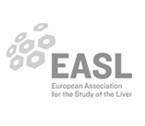Endoscopic Ultrasound
WHAT IS AN ENDOSCOPIC ULTRASOUND (EUS) & FINE NEEDLE BIOPSY?
An endoscopic ultrasound (EUS) is where the doctor uses an instrument called an endoscope, which has an ultrasound probe at its tip to examine the wall layers (inside and outside) of the upper and lower gastrointestinal tract. It also provides excellent pictures of your pancreas, bile ducts and organs in your chest. An endoscope is a long, thin, flexible tube with a small camera and light attached which allows the doctor to see the pictures of the inside and outside of your gut on a video screen. The scope bends, so that the doctor can move it around the curves of your gut. The scope also blows air and this expands the folds of tissues so that the doctor can see the linings better. As a result, you might feel some pressure, bloating or cramping during the procedure.
The EUS allows a fine needle biopsy (sample) of tissue to be taken inside or outside the wall of the gut. This needle is passed through the scope, and using the ultrasound as a guide, it is passed into the tissue of concern.
The EUS procedure is mostly used to:
- Diagnose tumours of the oesophagus, stomach, duodenum, pancreas and bile ducts.
- Diagnose some tumours of the lung.
- Diagnoses diseases of internal organs including, pancreatitis or cysts of the pancreas.
- Detect bile duct stones, including gall stones.
- Asses abnormalities of the walls (inside and outside) of the gut.
- Collect fluid samples from the lungs or abdominal cavity.
This procedure has 2 possible points of body entry, through a patient's mouth or anus, depending on the disease under investigation.
WILL THERE BE ANY DISCOMFORT, IS ANY ANAESTHETIC NEEDED?
The procedure can be uncomfortable and to make the procedure more comfortable a sedative injection or a light anaesthetic can be given. Before the procedure begins, the doctor will put a drip into a vein in your hand or forearm. This is where the sedation or anaesthetic is injected.
WHAT IS SEDATION?
Sedation is the use of drugs that give you a 'sleepylike' feeling. It makes you feel very relaxed during a procedure that may be otherwise unpleasant or painful.
You may remember some or little about what has occurred during the procedure.
Anaesthesia is generally very safe but every anaesthetic has a risk of side effects and complications. Whilst these are usually temporary, some of them may cause long-term problems.
The risk to you will depend on:
- personal factors, such as whether you smoke or are overweight.?
- whether you have any other illness such as asthma, diabetes, heart disease, kidney disease, high blood pressure or other serious medical conditions.
WHAT ARE THE RISKS OF THIS PROCEDURE & SEDATION?
There are some risks/complications with this procedure.
Common risks include;
- Nausea and vomiting.
- Faintness or dizziness, especially when you start to move around.
- Headache.
- Pain, redness or bruising at the sedation injection site (usually in the hand or arm).
- Muscle aches and pains.
- Allergy to medications given at time of the procedure.
Uncommon risks include:
- About 2 people in every 100 will get an infection from a fine needle biopsy of a cyst. Antibiotics are given during and after the procedure to reduce the risk of this complication.
- About 1 person in every 100 will experience pancreatitis. This usually settles without specific treatment but extremely rarely can cause death.
- About 2 people in every 1,000 will have minor bleeding from the gut where the fine needle biopsy was taken. This can usually be stopped through the endoscope. Rarely, surgery is needed to stop the bleeding.
- About 1 person in every 1,000 will accidentally get a tear or hole (perforation) through the wall of the gut. This can cause a leak of stomach contents into the abdomen. Surgery may be needed to repair the tear or hole.
- Missed growths in and around the gastrointestinal tract.
- Your procedure may not be able to be completed.
- Heart and lung problems such as heart attack or vomit in the lungs causing pneumonia. Emergency treatment may be necessary.
- Damage to your teeth or jaw due to the presence of instruments in your mouth.
- 'Dead arm' type feeling in any nerve, due to positioning with the procedure - usually temporary
- An existing medical condition that you may have getting worse.
Rare risks include;
- Bacteraemia (infection in the blood). This will need antibiotics.
- Stroke resulting in brain damage.
- Anaphylaxis (severe allergy) to medication given at the time of procedure.
- Death as a result of complications to this procedure is rare.
YOUR RESPONSIBILITIES BEFORE HAVING THIS PROCEDURE
You are less at risk of problems if you do the following:
- Bring all your prescribed drugs, those drugs you buy over the counter, herbal remedies and supplements and show your doctor what you are taking. Tell your doctor about any allergies or side effects you may have.
- Do not drink any alcohol and stop recreational drugs 24 hours before the procedure. If you have a drug habit please tell your doctor.
- If you take Warfarin, Persantin, Clopidogrel (Plavix or Iscover), Asasantin or any other drug that is used to thin your blood ask your doctor if you should stop taking it before the procedure as it may affect your blood clotting. Do not stop taking them without asking your doctor.
- Tell your doctor if you have;
- had heart valve replacement surgery.
- received previous advice about taking antibiotics before a dental treatment or a surgical procedure.
If so, you may also need antibiotics before the colonoscopy.
PREPARATION FOR THE PROCEDURE
Your stomach must be empty for the procedure to be safe and thorough, so you will not be able to eat or drink anything for at least six hours before the procedure.
WHAT IF THE DOCTOR FINDS SOMETHING WRONG?
Your doctor may take a biopsy (a very small piece of tissue from the area being examined) to be examined at pathology.
- Biopsies are used to identify many conditions even if cancer is not thought to be the problem.
WHAT IF I DON'T HAVE THE PROCEDURE?
Your symptoms may become worse and the doctor will not be able to give you the correct treatment without knowing the cause of your problems.
ARE THERE OTHER TESTS I CAN HAVE INSTEAD?
Yes. A computer tomography scan (CT) and magnetic resonance imaging (MRI's). Your doctor will discuss these options with you.
WHAT CAN I EXPECT AFTER THE UPPER GI ENDOSCOPY?
You will remain in the recovery area for about 2 hours until the effect of the sedation wears off. Your doctor will tell you when you can eat and drink. Most times this is straight after the procedure. Your throat may feel sore and you might have some cramping pain or bloating because of the air entering the stomach during the procedure. You will be told what was found during the examination or you may need to come back to discuss the results, and to find out the results of any biopsies that may have been taken.
WHAT ARE THE SAFETY ISSUES?
Sedation will affect your judgment for about 24 hours. For your own safety and in some cases legally;
- Do NOT drive any type of car, bike or other vehicle. You must be taken home by a responsible adult person.
- Do NOT operate machinery including cooking implements.
- Do NOT make important decisions or sign a legal document.
- Do NOT drink alcohol, take other mind-altering substances, or smoke. They may react with the
sedation drugs.
- Have an adult with you on the first night after your surgery.
Notify the hospital Emergency Department straight away if you have;
- severe ongoing abdominal pain.
- trouble swallowing.
- a fever.
- sharp chest or throat pain.
- have redness, tenderness or swelling for more than 48hours where you had the injection for
sedation (either in the hand or arm).










